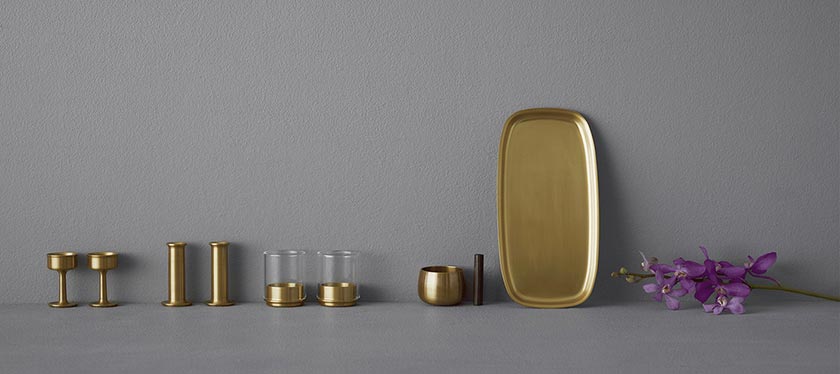Keita Suzuki of Japanese product design firm “Product Design Center” conducted the branding and product design for a new line of Buddhist altars and altar tools called “Shinobu”.
Given the modern metropolitan lifestyle in Tokyo, it has become increasingly difficult for Japanese citizens to afford the space to place a glorious, traditional sized Buddhist altar to pray. However, despite the fact that the altar is losing its place in the household, the peoples’ feeling of mourning the deceased have not diminished- if anything it is said to have increased in the past couple of years.
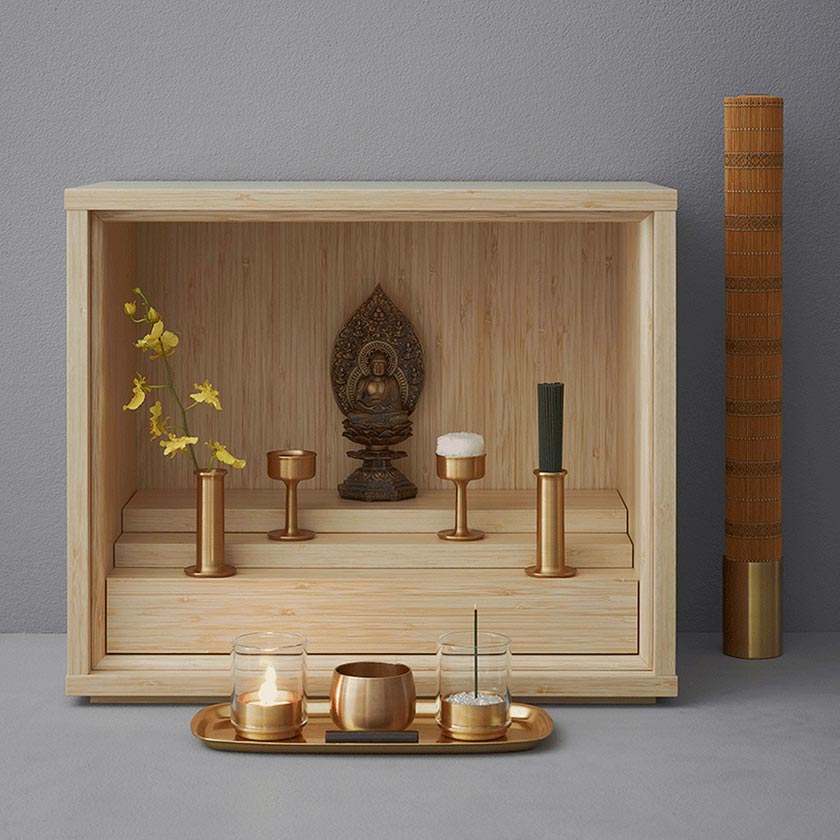
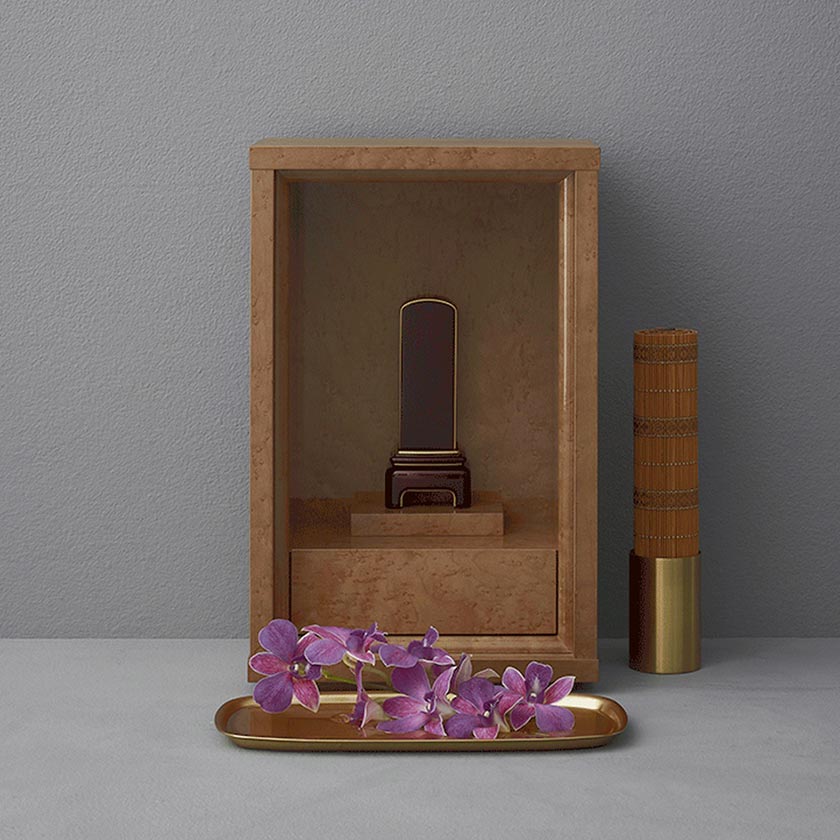
After the earthquake on March 11th 2011, the people of Japan who have survived the natural disaster mourned the lost souls. Keita Suzuki visited the affected regions and was shocked to see that in the temporary housing – despite the lack of other essential goods – there was a Buddhist altar. That is when he realized that in times of need, the Japanese citizens seek for help to the Buddhist deities. However, there is the reality that the younger generations lack the knowledge about the traditional ritual of praying, and therefore feel intimidated about buying altars for their homes. Moreover, given the housing situations in Tokyo, the demand for an altar has diminished over the past decade, as majority of individuals living in apartments would not be able to afford the space to place a traditional Buddhist altar.
Naturally, the aim of this project had become to find the perfect middle ground between these conflicting factors, and the outcome was to set the standard for the modern Buddhist altars and altar tools. Even in this modern era, there are still numerous products that have yet to be designed, and a Buddhist altar is one of them. “I think it is a designer’s dream to re-design an object that has yet to be designed” Mr. Suzuki explains. “In this day and age, it can be said that the chair is overdesigned. There are hundreds and thousands of different kind of chairs on the market, and the consumer can pick and choose colors, material shapes and sizes. Why can’t we buy a modern looking altar?”
The other goal for designing the altar was to make the ritual more casual by promoting the user to pray in a way that is unique and relevant to the subject. “Fundamentally, the act of mourning shouldn’t have rules and standards. I wanted to create an object that allows the individuals left behind to mourn in the fashion that they feel comfortable in.” “Shinobu” is a unique verb in the Japanese language, which translates to “Reminiscing the past person (or place), and thinking about them with nostalgia.” The Kanji character of “Shinobu” consists of a combination of the Japanese characters “Person” and “Think”.
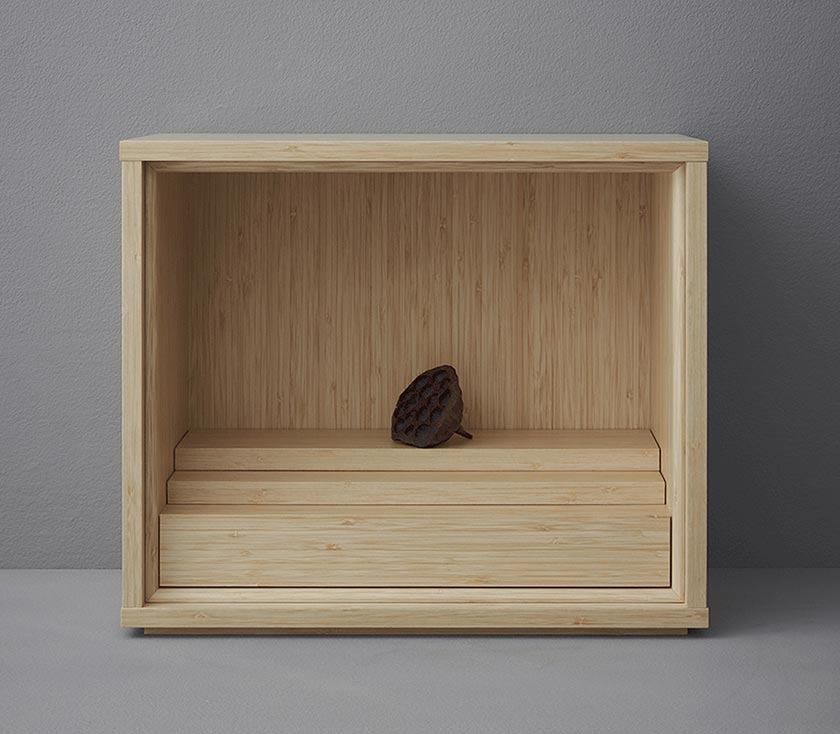
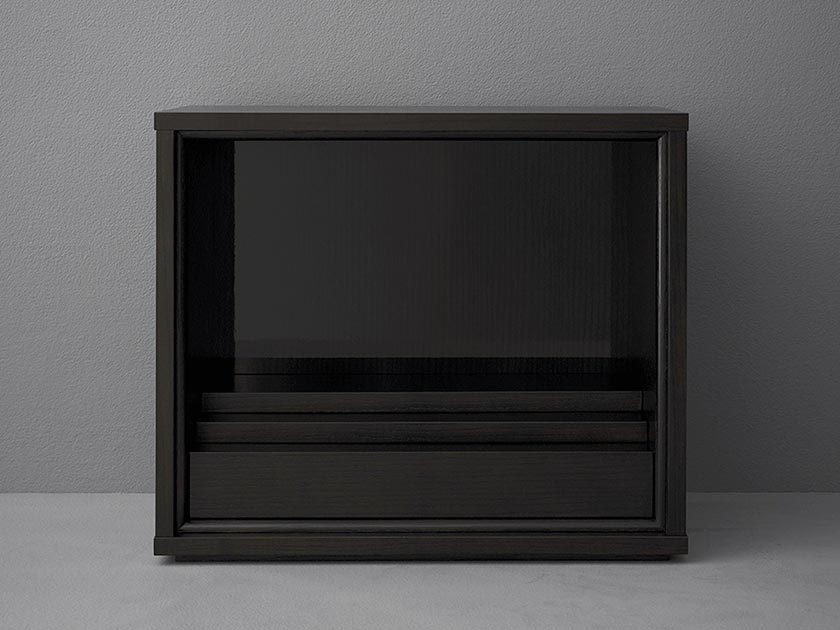

The size and function of the altar was completely revised, and through meticulous ideation the product was first stripped to its primary components to conduct the traditional ritual. After rigorous designing, countless prototypes and two years of development, the ideal altar for the modern household was created.
There are no doors on this new altar. Instead, the door was substituted with a bamboo blind- an object that allows fresh air and light to pour through. The contents within the altar can be swiftly concealed by subtly lowering the blinds. “I wanted to design an altar that doesn’t ‘trap’ the god inside doors.” Mr. Suzuki states. The basic functions of the altar were preserved so that the users have a choice to use it in the new innovated way, or to worship using the traditional methods. The drawers to store everyday items were preserved in the design as well. Materials with exquisite wood grains such as Bamboo and Birdseye Maple were used to construct the altar. In Japan, the Bamboo tree has been considered a sacred plant since the ancient times. The material texture of Bamboo does not restrict itself to a Japanese interior, as it also blends into a western style home. The Birdseye Maple on the other hand has a very distinct wood grain that is pleasant to the sight. The material is faintly stained to give the hard wood a glamorous finished look.
The Buddhist altar tools were developed with the full cooperation of “Nousaku” a traditional metalwork company based in Toyama Prefecture. The form primarily consists of curvilinear lines that give off a sense of affinity through its seemingly timeless presence. Needless to say the tools were carefully fabricated to preserve the functionality. For the tools that come in contact with fire, safety in use was considered. The heat-resistant glass was manufactured by Tokyo based Hirota Glass Co. Ltd., a glasswork company founded in 1899. The singing bowl (also known as the “Rin” Gong) has a ring shaped rubber stopper on the bottom that allows for use without a “Zabuton” cushion. Since the rubber stopper allows for the singing bowl to firmly sit on the surface, the acoustics of the instrument was enhanced to create an exquisite harmonic sound.
